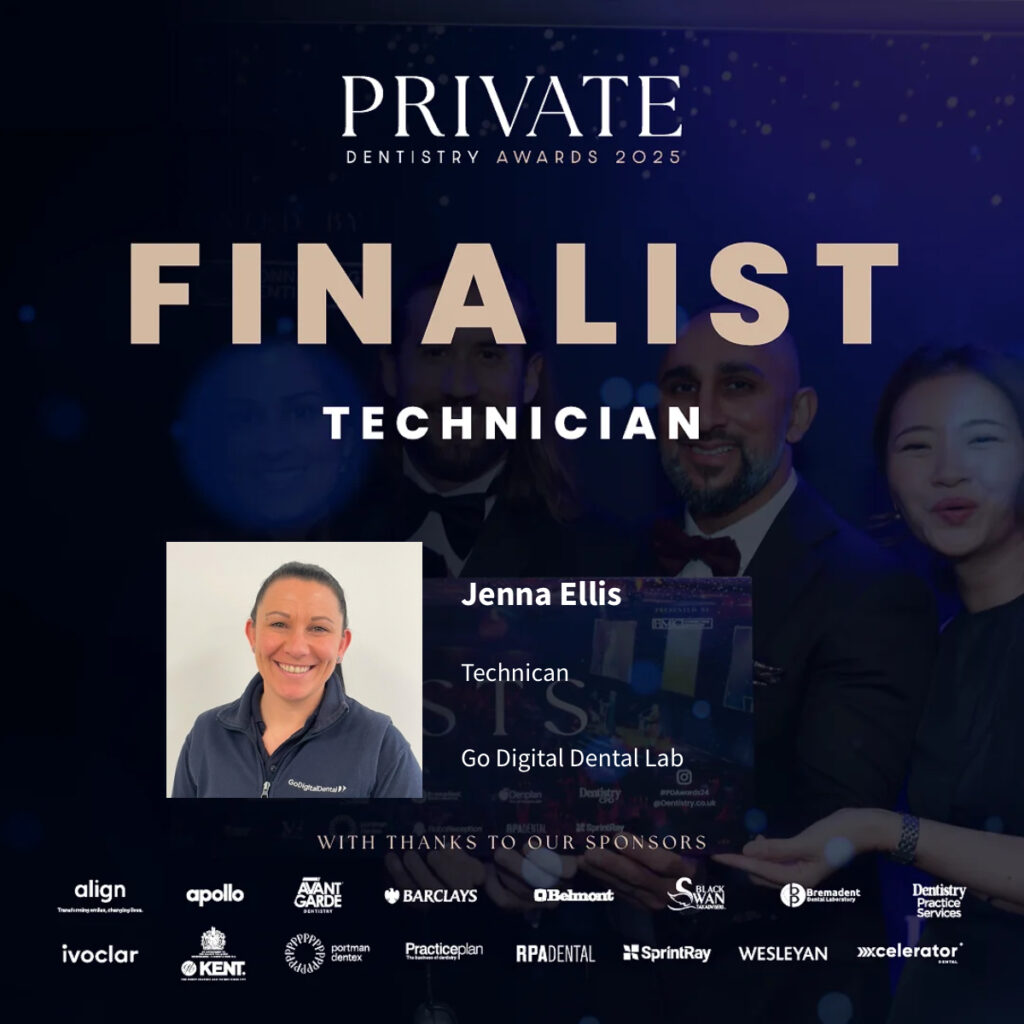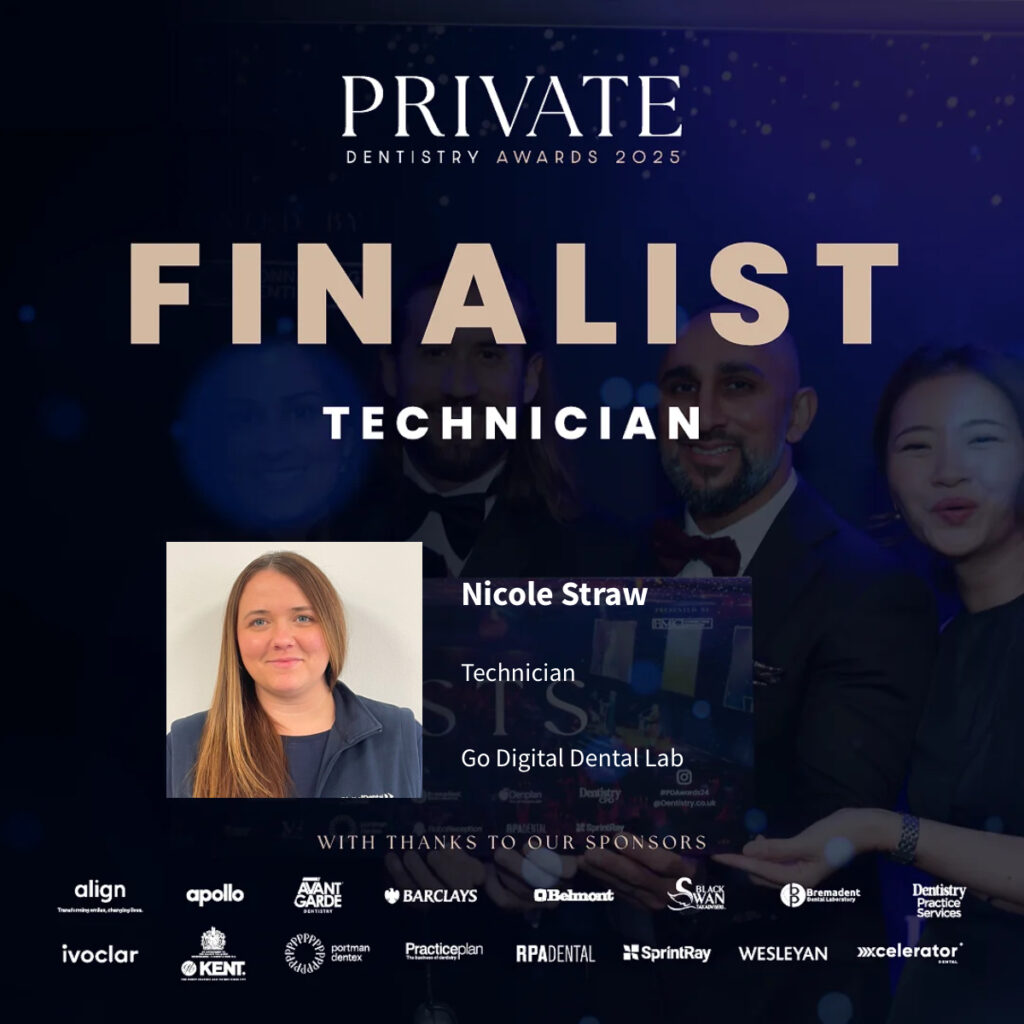Dental implant based solutions: accurate, reliable restorations for every patient
At GoDigital Dental implant lab, we offer advanced implant-based solutions using the latest digital technology to ensure your patients get the best results.
We offer implant planning for all implant systems, from single-unit cases to All-on-X cases, utilising an open software to enable us to work on a variety of systems. As well as helping you with the planning and implant guides, we can provide you with soft tissue solutions for the cases where aesthetics are a particular priority.
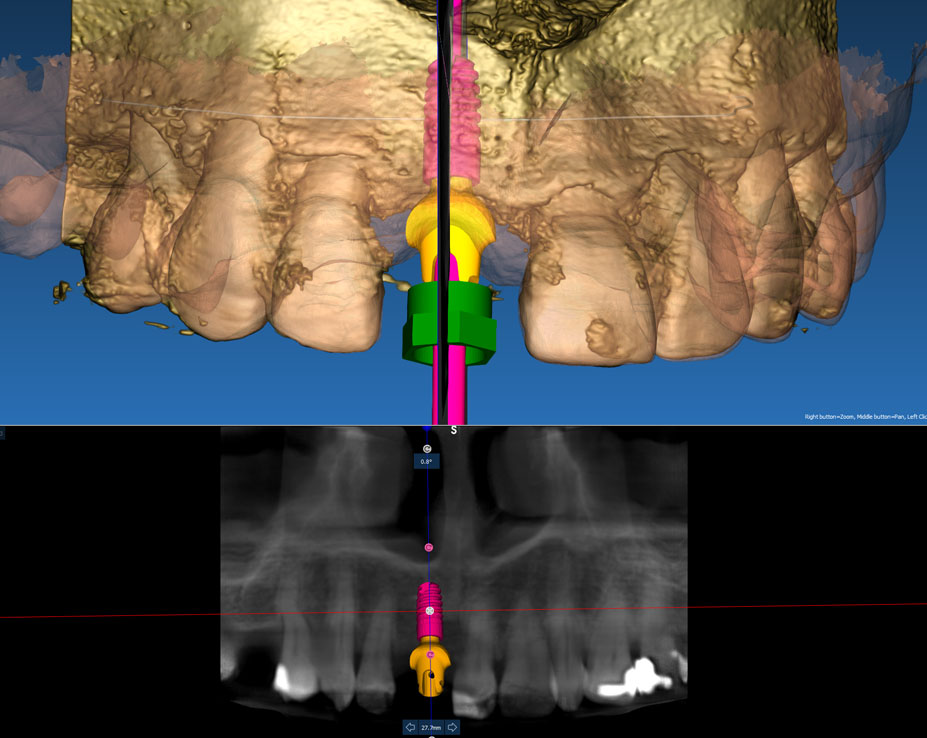
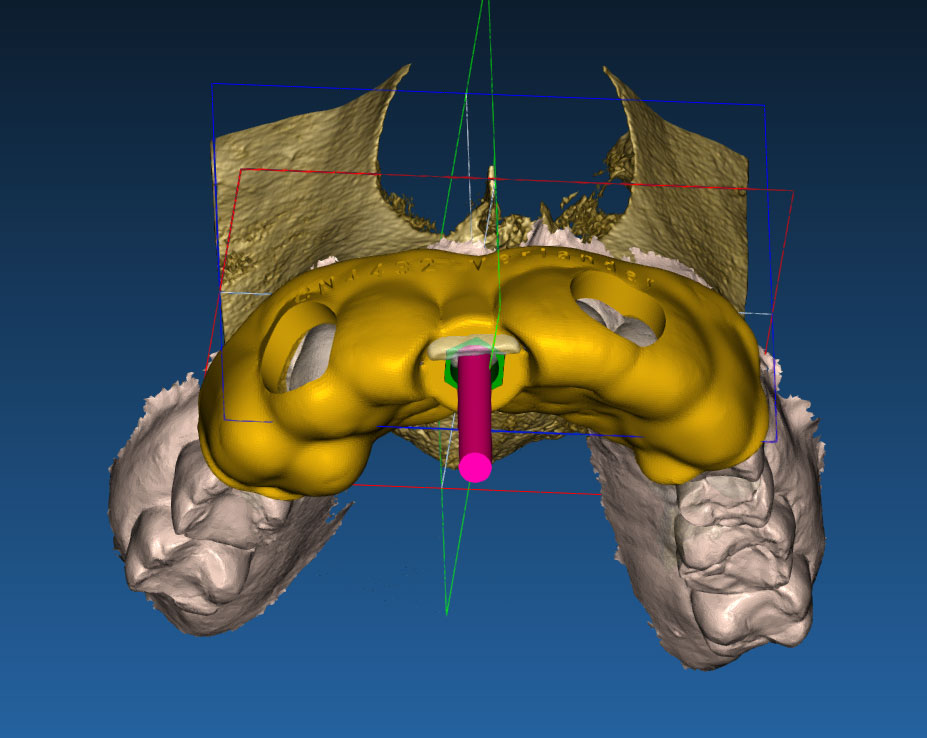
Dental Implant Lab Planning
Our experienced CAD team are on hand to plan a case from the very start as a pilot-guided or a fully-guided case. We can also be brought in on a case you already have planned, but would like an implant guide to be printed from your software.
All of our implant planning cases are sent as a PDF to a qualified, registered implant surgeon for approval. If there are any changes to be made, we offer a virtual meeting to make any adjustments with our CAD team. Alternatively, the plan can be sent via a cloud-based software that our clients can adjust at their own pace. Once the case has been approved and signed off by the implant surgeon, we go into production to print the implant guides.
When the case is returned to the practice, you will be provided with a PDF of the drill guide and sequence, if available. It is beneficial to all if we can do this, as it gives the implant surgeon complete predictability for the fully-guided implant cases we design.
We cover all implant systems from your CBCT scan with the aid of an intraoral scan. We can even start to plan which restorative components would suit each situation with most implant systems, making it much easier to predict the final restoration. Our experienced CAD and implant team are more than happy to communicate and collaborate to plan which restorative components are used with you in a virtual call.
If you prefer to plan your implant placement yourself and simply need a dental lab to design and manufacture the implant guide, we can also provide this service. Whether you’re looking for a very basic implant stent or a fully-guided implant stent, feel free to call and speak to our team to discuss your cases.
Flexible solutions for every implant case
Why choose GoDigital Dental for implant restorations?
Whether your patient needs a single implant, multiple implants, or a full-arch/All-on-X restorations, we can help. Our digital planning and bespoke designs ensure that each restoration is tailored to your patient’s needs. With GoDigital Dental, you can be confident that every implant restoration will be of the highest quality.
Precise planning
Using advanced digital technology, we carefully plan and design restorations with exceptional accuracy, significantly reducing the risk of errors and ensuring the best possible outcome for your patients.
Efficient digital workflow
Our fully digital workflow, including intraoral scanning, ensures outstanding precision, enhances patient comfort, and streamlines clinical procedures, making your practice more efficient and improving overall treatment outcomes.
Collaborative approach
We maintain a close working relationship with you, providing expert guidance to determine the most suitable treatment options for your patients, ensuring a smooth, predictable, and successful restoration process.
Flexible options
We work with all implant restorative systems, offering a wide range of restoration choices, including angled screw channels, custom abutments, All-on-X solutions, full or pilot guided stents, to suit various clinical needs.
Full-arch dental implants
All-on-X
An All-on-X case can be quite daunting for patients and surgeons alike. Our qualified team at GoDigital have been planning and manufacturing a wide range of implant restorative cases, many of which have been All-on-X, for a long time; infact, they have over 60 years of experience between them! We have worked on full-arch cases from the days of wax and cast all the way through to today’s digital technology.
The digital workflow has significantly aided the fabrication of such large cases, helping them become more precise and predictable; our CAD team works in a fully digital workflow from scan to finish. We see our dentists as a part of our dental laboratory team for All-on-X and large case workflows and recognise that they are just as important as the technician sitting beside us. We can assist you in the implant placement planning with fully-guided implant stents right through to fitting the final prosthesis, making All-on-X implants a smoother journey for you and your patient.
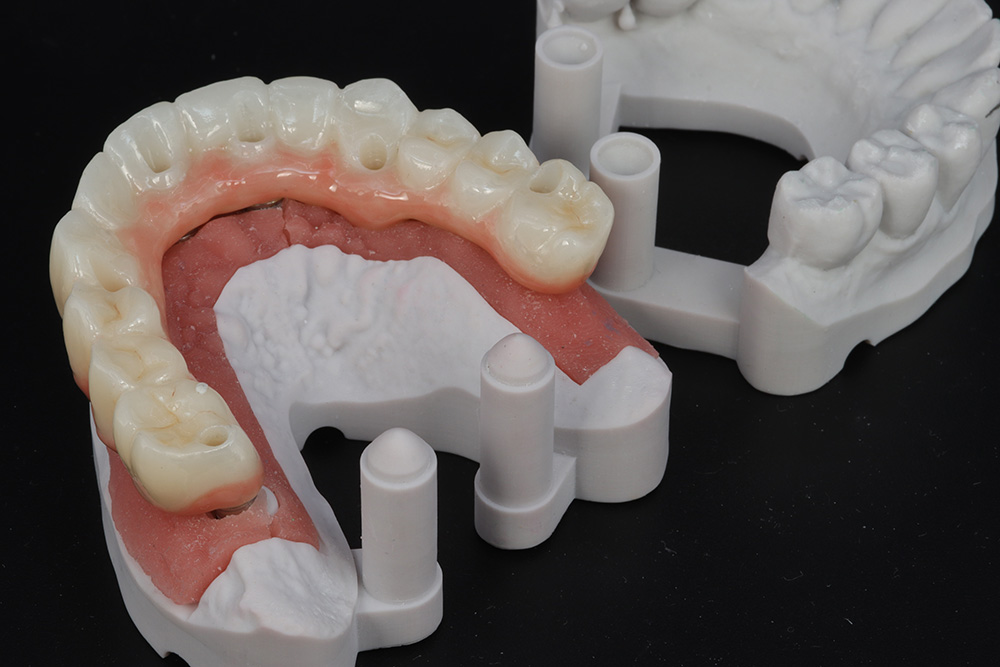
Restorative implant planning
Verification jigs and PMMA prototypes for large cases
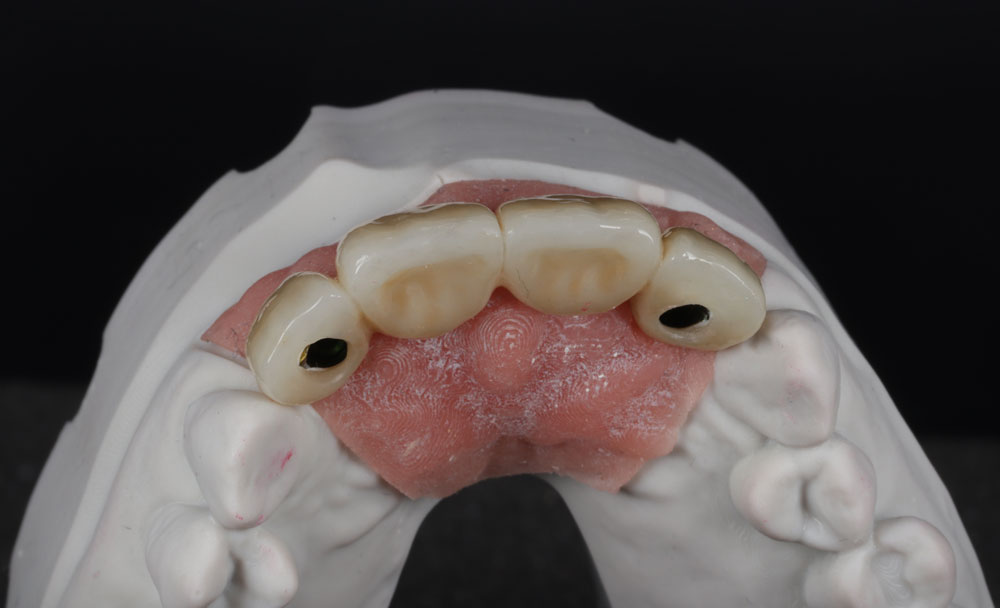
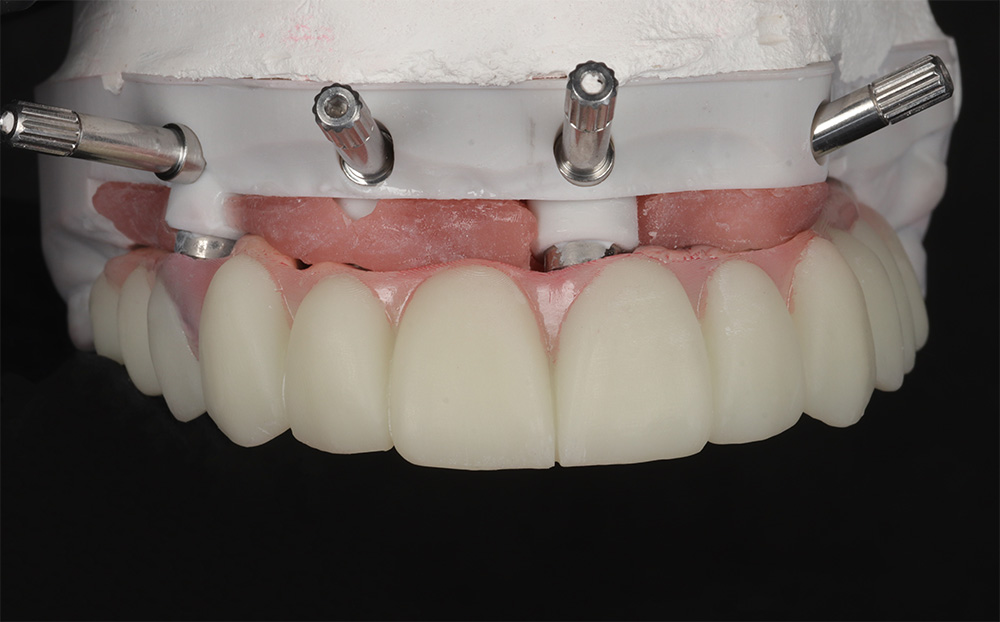
For all our larger cases, we would always recommend a verification jig to verify that the intraoral scan has meshed together accurately. We recommend a verification jig, just as we would have done for traditional cases in the past, to address any potential issues that can occur with the digital data, although issues are very rare. Once we’re happy with the digital model, we can fabricate the restoration in a few ways, depending on the dentist’s preference.
Once all is satisfactory with the intraoral scan and digital model, we’re ready to plan the restorative side, if we didn’t already do this in the implant planning stage. We will provisionally design the case and send out a temporary PMMA (Polymethyl methacrylate) unit, which helps the team get a better idea of what the final result will look like. It also gives the patient and dentist a chance to check aesthetics, occlusion, and shade.
In all All-on-X cases, we can check if pink gum work is needed to meet a patient’s aesthetic requirements. The beauty of a PMMA unit is that it can be adjusted chairside and, whether reducing an element or adding extra details, these changes can all be incorporated into the final restoration.
Another option we provide is for the patient to go home and wear the PMMA restoration for a few days. This is particularly beneficial if the patient has been missing teeth for a while or is converting from a removable prosthesis to a fixed one.
Keeping it screw-retained
Angled screw channel (ASC) Ti-bases for challenging angles
There are numerous ways to restore an implant with diverging paths. At GoDigital Dental, we understand that it’s not always possible to place an implant in the ideal situation, or that you may be restoring an older implant that has been placed at an acute angle. The software we work with helps us combat many difficult situations, and we have built great relationships with our implant and restorative suppliers, enabling us to help you restore any case.
We are able to angle up to 30 degrees as a screw-retained unit and, for restorations that require further angulation, we can plan together should you wish. We can plan and utilise MUA (multi-unit abutments) with either an angled restoration or a screw-retained custom base, depending on your preference.
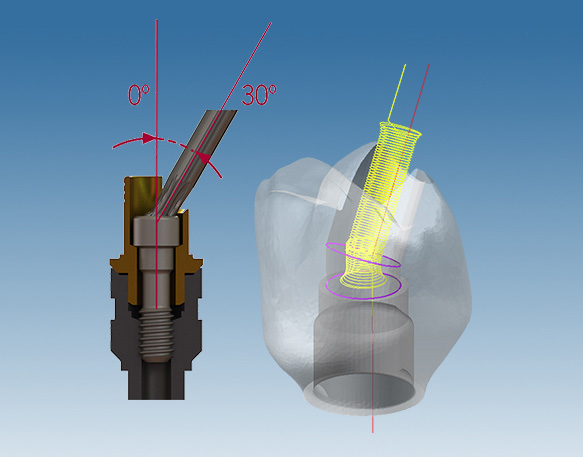
Cement-retained solutions
Custom titanium abutments
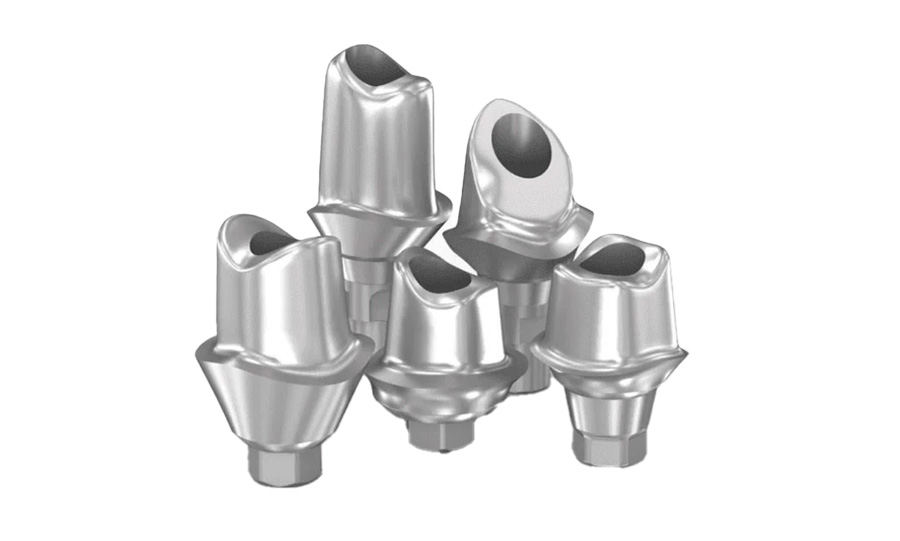
Although cement-retained implants are not the go-to restoration for a lot of our dentists, there are still situations where a cement-retained restoration is both preferred and required. For instance, an implant may have been placed very deep in an area where bone grafting wasn’t possible. In these cases, we may suggest using a titanium cement-retained abutment with a crown. This is an ideal way of giving a restoration better support and further angulation than a screw-retained prosthesis, and we will adhere to your cement junction preferences so that you can choose cement-retained restorations with confidence.
Request Our Dental Laboratory Price List Find out how our pricing can support your cases
Complete our simple request form to receive pricing tailored to your requirements. Our simple approach ensures you have all the information you need to plan cases efficiently, while partnering with a reliable dental laboratory you can trust.
Awards Finalists in the Private Dentistry Awards 2025
We are proud to share that two of our talented dental technicians at GoDigital Dental have been shortlisted as finalists in the Technician Team Member category at the Private Dentistry Awards 2025. This achievement recognises their outstanding skill, dedication, and commitment to excellence in digital dentistry.
Customer Reviews
Implant-based solutions FAQs
What do you need from an implant dentist in terms of scans for implant restorations?
When it comes to scans for implant restorations, what we need from an implant dentist is a clear and accurate scan of all the key reference points on the scanbody. This usually includes areas like the flat spot or the hexed section, depending on the type of scanbody you use. It’s also important to provide a scan of the implant and surrounding gum tissue without the scanbody in place.
Along with these, we always require a precise bite or occlusal scan to understand how the teeth come together. Intraoral scanning for implant cases is generally easier than for crown preparations because there are no deep margins to capture, and the scans tend to be cleaner due to the surgical procedure.
The more detailed information you provide, the smoother the case will be for everyone involved. Plus, using an intraoral scanner lets you send us the scans quickly and get real-time feedback while the patient is still in the chair, helping to ensure the best possible outcome.
Do I need a verification jig for all my cases and what would happen if I didn’t use one?
A verification jig is a custom-made device created from your initial scan data to check how accurate the scan file is. It is especially useful for large or complex implant cases where precision is very important.
We strongly recommend using a verification jig to confirm that the implant scan data matches the digital model. In many situations, we advise not moving forward without one. However, smaller cases, such as single or short-span restorations, may not always need a jig. If we think the scan data might be slightly off, we will let you know and offer the option to use one. If you decide not to use a jig when we recommend it, we cannot guarantee the results, and this might cause extra chair time, patient frustration, poor restorations, and additional costs.
Using a verification jig requires an extra appointment. During this visit, you will remove the healing caps and try the jig over the MUAs or directly on the fixture head. We suggest tightening the screws gently by hand to make sure it sits properly. Once in place, take an X-ray to check that everything looks correct internally before proceeding.
Why do you use PMMA prototypes?
We use a PMMA prototype to check the appearance, tooth shape, and function of implants before making the final restoration. This is especially helpful for patients who have been without teeth for years and are moving from a removable prosthesis to a fixed bridge. A PMMA prototype lets dentists and patients check bite and speech, as well as the final smile line. This helps decide if pink gum work is needed and ensures the patient is happy with the progress.
All PMMA prototypes we make can be adjusted by adding or removing material. This allows dentists to correct the bite or change tooth length, such as the incisors, to achieve a natural look. The great thing about PMMA prototypes is that nothing is permanent at this stage, so we can make all needed changes before creating the final restoration.
PMMA prototypes aren’t just for full arch implant cases. We also recommend using them for cosmetic treatments and simple crown and bridge cases to help plan and achieve the best results for both patient and dentist.
Where would I need to use an ASC abutment and are they suitable in all angled implant situations?
ASC Ti bases are used when an implant is placed at an angle, and a straight Ti base is not suitable for the restoration. These angled bases help ensure that the restoration fits properly and functions well despite the implant’s position. If we believe an ASC Ti base is the best choice for a case, we always communicate this clearly with the clinician. This way, they can trust our judgement and feel confident in the decisions we make for the best outcome.
Angled Ti bases are often used in situations like long-span bridge cases, where the implants may not be perfectly aligned. However, in some cases, the angle is so severe that an ASC Ti base may not be enough. In these situations, we might need to consider alternative restorative components such as multi-unit abutments or custom bases. A custom base is a screw-retained restoration made specifically for the unique needs of a particular implant case. Since these are not standard stock parts, we always discuss this option with the dentist to ensure everyone agrees on the best plan for the patient.
How does digital technology help with implant restorations?
Digital technology helps us create clear 3D images of the implant area, making it much easier to plan the restoration before starting any work. These detailed images allow us to see the exact position and condition of the implant site, which helps ensure the implant is placed accurately and safely. This reduces the risk of mistakes during surgery and improves the chance of a successful outcome. The digital images also help us spot any potential problems early on, so we can deal with them before making the final restoration. Using these images, we can also simulate different treatment options to choose the best approach for each patient.
Using digital tools speeds up the whole planning process because the images can be shared quickly and securely between the dentist and the lab. This faster communication means we can design and produce restorations that fit better and are more accurate. The result is a restoration that looks natural, functions well, and lasts longer. Overall, digital technology makes the implant restoration process smoother, faster, and more reliable for both dentists and patients.
How do you work with dentists on implant cases?
We work closely with dentists throughout the entire implant process to make sure everything goes smoothly from start to finish. From the initial planning stages to the final restoration, we keep in regular contact with the dental team. The dentist provides important information about the patient’s needs and medical history, and we offer advice based on our experience to help achieve the best possible outcome. This teamwork is key to making sure the treatment is successful and the patient is happy with the results.
Our skilled technicians design and create the restorations with great care, making sure they fit well and function properly. We pay close attention to detail to ensure each restoration meets high standards for comfort and appearance. We work closely with the dentist to adjust designs if needed, based on feedback or any changes in the patient’s situation. This collaboration helps us deliver the best treatment possible.
By working together, we aim to give patients a natural-looking, long-lasting restoration that improves their smile and oral health. Communication and teamwork are at the heart of everything we do.
In what ways can intraoral scanning benefit implant cases?
Intraoral scanning offers a quick, accurate, and comfortable way to take digital impressions of a patient’s mouth. Unlike traditional methods that use messy materials and can cause discomfort or gagging, intraoral scanning is fast and easy for both patients and dentists. The scanner captures clear, detailed 3D images of the implant area, which helps us plan the restoration with greater precision and care.
Because the images are digital, there is less chance of errors compared to traditional impressions. The digital files can be sent straight to the lab without delay, speeding up the entire process. This means restorations can be designed and produced more quickly, reducing the overall treatment time.
Using intraoral scanning technology also improves the fit and accuracy of the final restoration. Patients enjoy a more pleasant experience because the scanner is less invasive and uncomfortable. Overall, intraoral scanning helps create better results for patients while making the treatment faster and smoother for both the dentist and the dental lab.
What are your protocols for shade matching and achieving aesthetic outcomes in implant crowns?
When it comes to shade matching and achieving great aesthetic outcomes in implants, we focus on accuracy and communication. We understand how important it is for implant crowns to blend naturally with the patient’s existing teeth. To do this, we use a combination of digital and traditional methods. We welcome high-quality photos and shade guides from the dentist, which help us match the colour precisely. We also use specialised shade-taking tools and advanced digital technology to ensure the colour is as close to natural teeth as possible.
We work closely with dentists to discuss the patient’s needs and expectations before starting the restoration. If needed, we offer our own shade-taking service to support practices that require extra help with colour matching. Throughout the process, we pay close attention to details such as translucency, surface texture, and brightness to make sure the crown looks natural and attractive.
By combining these careful protocols with clear communication, we can achieve implant crowns that not only fit well but also look great, giving patients confidence in their new smile.
Is digital scanning better than traditional impressions for dental implants?
Yes, digital scanning is much better than traditional impressions in many ways. It is faster, more accurate, and much more comfortable for the patient. Traditional impressions often use messy, sticky materials that can be unpleasant and sometimes cause patients to gag or feel uncomfortable. Digital scanning removes the need for these gooey materials, making the process much easier and quicker for everyone involved.
Digital scans provide very clear and detailed 3D images of the teeth and gums. This higher level of accuracy means the restorations fit better and are more precise. Because the scanner captures everything clearly, there is less chance of errors or the need to take multiple impressions.
Overall, digital scanning makes the whole dental treatment faster and less stressful for the patient. It also helps the dental lab create restorations that look and feel better. This modern technology improves the patient experience while giving dentists and technicians the tools they need to deliver excellent results every time.
How long does it take to complete an implant restoration?
The time it takes to complete an implant restoration can vary depending on the complexity of the case. For simpler cases, the process might take a few weeks to finish. However, more complicated cases can take longer because the implant needs time to heal and properly bond with the bone before the final restoration is made. Healing times can differ between patients, and careful monitoring is important to ensure the best results.
Using digital technology helps speed up the entire process. Digital scans provide quick and accurate measurements, while 3D planning allows the dentist and lab to work together more efficiently. Sharing digital files means less waiting for physical impressions or models to arrive. This improved communication helps reduce delays and mistakes. Overall, digital technology makes it possible to complete restorations faster, which means patients spend less time waiting and get their new teeth sooner. It also improves accuracy and the quality of the final restoration, leading to better outcomes.
SEND A MESSAGE
hello@godigital-dental.com
GoDigital Dental | Dental Lab
6 Millennium Way West
Nottingham
NG8 6AS


